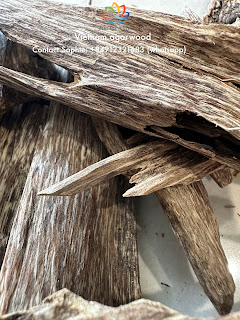Agarwood, also known as "oud," is a highly prized aromatic resin produced by the Aquilaria tree when it becomes infected with a specific type of mold. Traditionally, agarwood has been used in perfumes, incense, and traditional medicine, but its applications in cosmetics have been gaining attention in recent years due to its unique properties. Here’s how agarwood is relevant for cosmetics:
Benefits of Agarwood in Cosmetics
Anti-inflammatory Properties:
Facial Oils and Serums:
Agarwood is a rare and expensive material because it is naturally produced in small quantities. Overharvesting has led to its classification as an endangered species. To address this, many producers now rely on sustainable cultivation and artificial inoculation methods to produce agarwood resin.
DIY Skincare with Agarwood
For those looking to experiment with agarwood at home, diluted agarwood essential oil can be mixed with carrier oils like jojoba or argan oil and applied as a skincare treatment.
Benefits of Agarwood in Cosmetics
Anti-inflammatory Properties:
- Agarwood contains compounds that help reduce inflammation, making it suitable for soothing sensitive or irritated skin.
- Agarwood oil is rich in antioxidants that combat free radicals, helping to prevent premature aging and promoting a youthful complexion.
- The antimicrobial properties of agarwood can help in managing acne and other skin conditions caused by bacteria.
- Agarwood essential oil is deeply nourishing and hydrating, making it a valuable ingredient in moisturizing creams and serums.
- Its rich, woody scent is often used in skincare products for its calming and mood-enhancing properties, making it ideal for spa and relaxation-focused products.
Facial Oils and Serums:
- Agarwood oil can be infused in facial serums for anti-aging and skin repair benefits.
- Agarwood's exotic scent makes it a luxury ingredient in high-end perfumes and body mists.
- Added to creams and lotions to enhance hydration and provide anti-inflammatory benefits.
- Used in handmade or luxury soaps for its fragrance and skin-healing properties.
- Commonly used in aromatherapy and relaxation products.
- Helps in moisturizing lips and strengthening hair follicles.
Agarwood is a rare and expensive material because it is naturally produced in small quantities. Overharvesting has led to its classification as an endangered species. To address this, many producers now rely on sustainable cultivation and artificial inoculation methods to produce agarwood resin.
DIY Skincare with Agarwood
For those looking to experiment with agarwood at home, diluted agarwood essential oil can be mixed with carrier oils like jojoba or argan oil and applied as a skincare treatment.
















